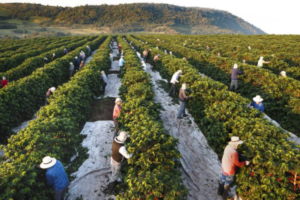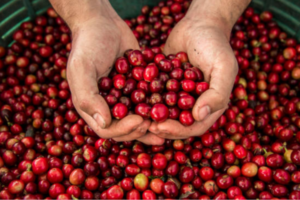Introduction
Coffee, with its aromatic allure and rich history, transcends mere beverage status to become a universal symbol of hospitality, comfort, and conviviality. Its journey from the highlands of Ethiopia to the bustling streets of global metropolises is a testament to its enduring appeal and cultural significance. In this immersive exploration, we embark on a sensory odyssey through the world of coffee, uncovering its diverse flavors, deep-rooted cultural significance, economic impact, technological advancements, and emerging trends that continue to shape our collective relationship with this extraordinary elixir.
The Origins of Coffee: From Ethiopian Legends to Global Phenomenon
Coffee’s origins are shrouded in myth and legend, with tales of discovery dating back to ancient times in Ethiopia. According to one popular legend, a goat herder named Kaldi stumbled upon the invigorating properties of coffee berries after noticing his goats became unusually energetic upon consuming them. Intrigued by this discovery, Kaldi shared his findings with local monks, who began to experiment with the berries, discovering their stimulating effects. News of this newfound beverage soon spread across the region, leading to the cultivation and consumption of coffee throughout Ethiopia.
The Birth of Coffee Culture: Exploring Regional Varieties
As coffee cultivation spread beyond Ethiopia, it gave rise to a diverse array of regional coffee cultures, each with its own unique customs and traditions. In the Arabian Peninsula, coffee became an integral part of Islamic culture, with coffee houses, or “qahveh khaneh,” serving as centers of social interaction and intellectual discourse. These establishments provided a space for people to gather, engage in lively debates, and exchange ideas while enjoying cups of freshly brewed coffee.
In Italy, coffee culture evolved into a passionate pursuit of perfection, with espresso emerging as the quintessential Italian coffee experience. Italian espresso is characterized by its intense flavor, rich crema, and velvety texture, achieved through meticulous roasting, grinding, and brewing techniques. Espresso bars, known as “caffe,” became an integral part of Italian social life, where locals gather to enjoy a quick espresso or linger over a leisurely cappuccino while engaging in animated conversation.
Exploring Flavor Profiles: From Earthy Ethiopian Yirgacheffe to Bold Italian Espresso
The diversity of flavors found in coffee is a testament to the intricate interplay of factors such as geography, climate, and processing methods. In Ethiopia, where coffee cultivation has been practiced for centuries, beans from regions like Yirgacheffe are celebrated for their complex flavor profile, which often includes floral notes, citrus acidity, and a lingering sweetness. These beans are typically grown at high altitudes, where the cooler temperatures and fertile soil contribute to their unique characteristics.
In Italy, espresso is revered for its bold flavor, intense aroma, and luxurious mouthfeel. Italian espresso is typically made from a blend of Arabica and Robusta beans, which are carefully roasted to achieve a balance of sweetness, bitterness, and acidity. The beans are then finely ground and brewed under high pressure, resulting in a concentrated shot of coffee that is rich, full-bodied, and bursting with flavor.
The Impact of Coffee on Society: From Enlightenment Salons to Third Wave Cafes
Coffee has played a profound role in shaping societies and cultures around the world, influencing everything from social customs and cultural practices to economic systems and political movements. In the 17th and 18th centuries, coffeehouses emerged as vibrant centers of intellectual exchange and social discourse in cities across Europe. These establishments, often referred to as “penny universities,” were frequented by scholars, writers, artists, and activists who gathered to discuss ideas, share knowledge, and debate the issues of the day over a cup of coffee.
In the modern era, the rise of the “third wave” coffee movement has transformed the way we think about and consume coffee. This movement, which emerged in the early 2000s, is characterized by a focus on quality, sustainability, and transparency throughout the coffee supply chain. Third wave coffee roasters and cafes prioritize direct trade relationships with coffee producers, artisanal roasting techniques, and precise brewing methods to highlight the unique flavors and characteristics of different coffee varieties.
Economic Impact and Technological Advancements in the Coffee Industry
The global coffee industry is a powerhouse, driving economic growth and supporting millions of livelihoods around the world. Coffee is one of the most valuable commodities in international trade, with billions of dollars exchanged annually on the global market. The economic impact of coffee is particularly significant in developing countries, where it is often a primary source of income for millions of smallholder farmers and their families.
Technological advancements have revolutionized every aspect of the coffee industry, from cultivation and harvesting to processing, roasting, and brewing. In recent years, precision agriculture technologies, such as satellite imaging, drones, and soil sensors, have enabled coffee farmers to optimize crop yields, reduce water usage, and minimize environmental impact. Meanwhile, advancements in coffee roasting and brewing equipment have led to greater control over the roasting process, resulting in more consistent and flavorful coffee.
Emerging Trends in Coffee Consumption: Specialty Coffees and Alternative Brewing Methods
As consumer preferences evolve and tastes become more discerning, the demand for specialty coffees and alternative brewing methods continues to grow. Specialty coffee, which is defined by its exceptional quality, traceability, and unique flavor profiles, has become increasingly popular among coffee enthusiasts who are willing to pay a premium for high-quality beans. Specialty coffee roasters and cafes often prioritize direct trade relationships with coffee producers, sustainable farming practices, and innovative brewing techniques to showcase the unique flavors and characteristics of different coffee varieties.
Alternative brewing methods, such as pour-over, cold brew, and AeroPress, offer coffee enthusiasts a more hands-on approach to brewing coffee and allow for greater control over extraction parameters, such as water temperature, grind size, and brewing time. These methods often result in a more nuanced and flavorful cup of coffee that highlights the inherent qualities of the beans.
Conclusion
Coffee’s journey from its origins in ancient Ethiopia to its global ubiquity today is a testament to its enduring appeal and cultural significance. As we traverse the diverse landscapes of coffee culture, from the tranquil coffee farms of Central America to the bustling streets of European cities, let us savor not only the rich flavors and aromas that fill our cups but also the stories, traditions, and innovations that make coffee a truly remarkable beverage. Whether enjoyed in a bustling cafe in Italy, a tranquil coffee farm in Colombia, or the comfort of our own homes, coffee continues to inspire, delight, and unite us in a shared appreciation for the simple pleasure of a perfect cup.



